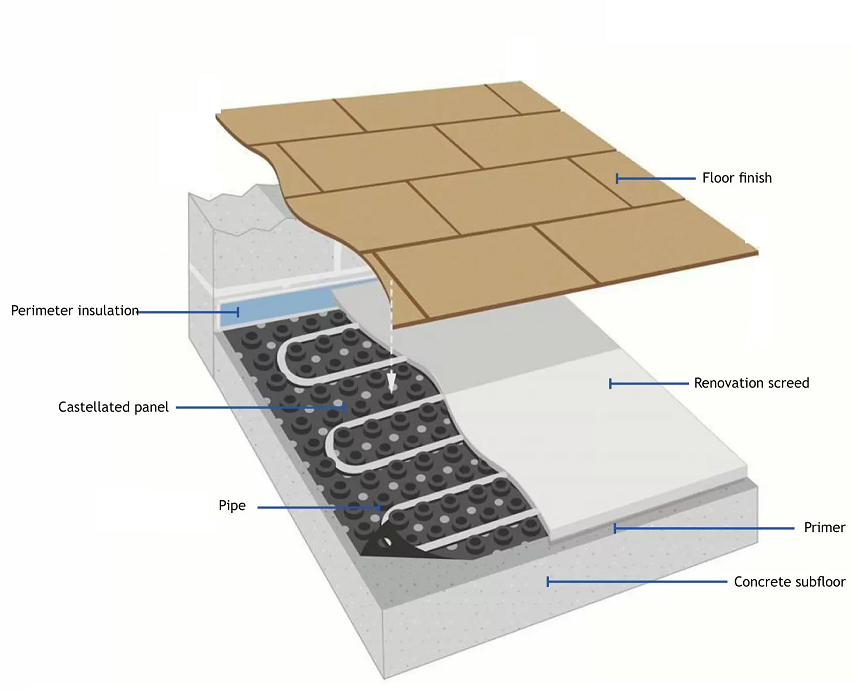
Energy Efficiency: A Priority for Existing Buildings
Energy efficiency is paramount today, driven by environmental concerns, rising energy costs and increasingly stringent regulations. While new buildings often incorporate energy-saving features, a significant opportunity lies in retrofitting existing structures. Approximately 80% of the buildings we'll use in 2050 already exist, making energy-efficient retrofits crucial for achieving ambitious sustainability targets.
Minimising heat loss is fundamental to improving efficiency. Upgrading insulation in walls, roofs and floors significantly reduces the energy required to maintain comfortable temperatures.
One of the most effective ways to enhance energy efficiency is to transition to low-temperature heating systems. Underfloor heating excels in this area due to its large surface area, which allows for efficient heat transfer at lower water temperatures. Its compatibility with low-temperature heat sources like air and ground-source heat pumps makes it a highly desirable choice.
When retrofitting with underfloor heating, careful consideration must be given to several factors:
Compatibility with existing structures: Systems like Uponor Minitec offer flexibility, allowing installation over existing flooring, screed, or as part of a complete floor replacement. Lightweight options like Uponor Siccus are suitable for structures with limited weight-bearing capacity.
Floor Height Increases: Minimising floor height increases is crucial in retrofit projects. Some systems can be installed with minimal height additions, often as little as 15mm.
Enhanced Comfort: Underfloor heating provides even heat distribution, creating a more comfortable home environment.
Thermal Mass: Wet installation systems using screed offer excellent thermal mass. They absorb, store, and release heat gradually, minimising energy consumption.
System Performance: Factors such as ease of installation, heat-up times and compatibility with desired floor finishes should be carefully evaluated.
Manufacturer Support: Technical assistance from the manufacturer throughout the design and installation process is invaluable in ensuring a successful and efficient retrofit.
By prioritising insulation and implementing low-temperature heating systems, such as underfloor heating, significant strides can be made towards achieving energy efficiency goals in existing buildings.
Retrofit Underfloor Heating at Underfloor Store
Explore our range of retrofit solutions, including Uponor Minitec and Cellecta XPS Foiled Low Profile boards. Get a free quote and discover how underfloor heating can enhance the energy efficiency of your existing building.